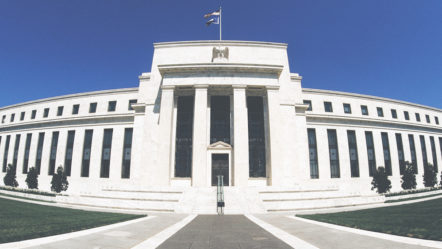Once again, the United States finds itself in a financial crisis with the Federal Reserve squarely in focus, as both the cause and potential remedy of this developing global issue. Acting as an agent of monetary policy, the Fed injected trillions of dollars into the economy to backstop financial institutions during the COVID pandemic. The Biden Administration followed with three spending bills, which furthered inflation. In 2022, the Fed began raising interest rates rapidly to stem the inflation it created. The resulting increase decreased the value of treasury notes in banks’ portfolios, deemed risk free if held to maturity. Depositors seeking higher returns than those offered in savings and checking accounts facilitated outflows on many banks that had to take massive losses in their treasuries to meet withdrawals.
The Federal Reserve’s basic mission is twofold: maintain price stability and foster full employment. It implements monetary policy using three tools: setting the fed funds and discount rates; establishing reserve requirements in member banks; and conducting open market operations through the purchase and sale of securities.
The Federal Reserve controls short term interest rates through the Federal Reserve Open Market Committee. Meeting eight times annually, these 12 committee members look backward at economic data to set rates for a dynamic economy influenced by numerous inputs every second.
The market controls longer term rates, automatically, and these rates are impacted by several factors. First, supply and demand of capital. The greater the supply of money the lower the rate and as this money is demanded by the market, rates rise. Second, the market imposes a cost on the time preference of money. Interest rates are not the price of capital, they are the opportunity cost of time. Third, there is a risk premium that the lender demands if the borrower defaults. Finally, an inflationary expectation raises the rate required by any lender to keep pace with the constant devaluation of the currency. These interest rate determinates are calculated by the market, described by Jude Wanniski, “as the most accurately programmed computer on the planet.” Millions of market participants move rates instantaneously, without looking at GDP, PCE or CPI prints. These markets are efficient, forward looking and have stood the test of time.
The actions by the Fed over the past year has resulted in a distortion in the bond market and is rapidly increasing the risk spectrum across all asset structures. These actions will result in further government intervention, which will create additional inflationary measures as fiduciary credit is injected into the banking system to shore up reserves in banks and bolster consumer confidence. In essence, reversing the action that the Fed has taken by raising rates and engaging in quantitative tightening, removing $120 billion per month in credit from the economy. The central bank is now caught in a monetary “do-loop,” with no end in sight.
There is no reason that Congress should continue to allow a backward-looking centralized body to control short term interest rates. All other rates are controlled efficiently by the market. Rather than blithely attending meetings in the Senate Finance Committee or the House Financial Services Committee, members should review the long term devaluation inflicted by the Federal Reserve on the U.S. Dollar and embrace more market alternatives regarding the management of short term interest rates.
Over the past few decades, economic crises have become more severe and more frequent, requiring greater government involvement. The continued mismanagement of the economy and devaluation of the dollar has made consumers less wealthy. Sound and stable money is the foundation of strong economies. When compared to the human body, a nation’s currency is the bloodstream, affecting every cell and organ. As the central bank increases and decreases rates while allowing the dollar to be devalued, governments of China and Russia are beginning to use other currencies to pay for oil. Gold purchases have been made by many central banks and the emergence of cryptocurrencies as a dollar and bank alternative, suggests doubt in the mind of some global market participants.
Congress needs a broad review of the Federal Reserve’s mission and determine whether it has succeeded in its primary goal of price stability. Allowing the market to set short term interest rates may be a good first step.




